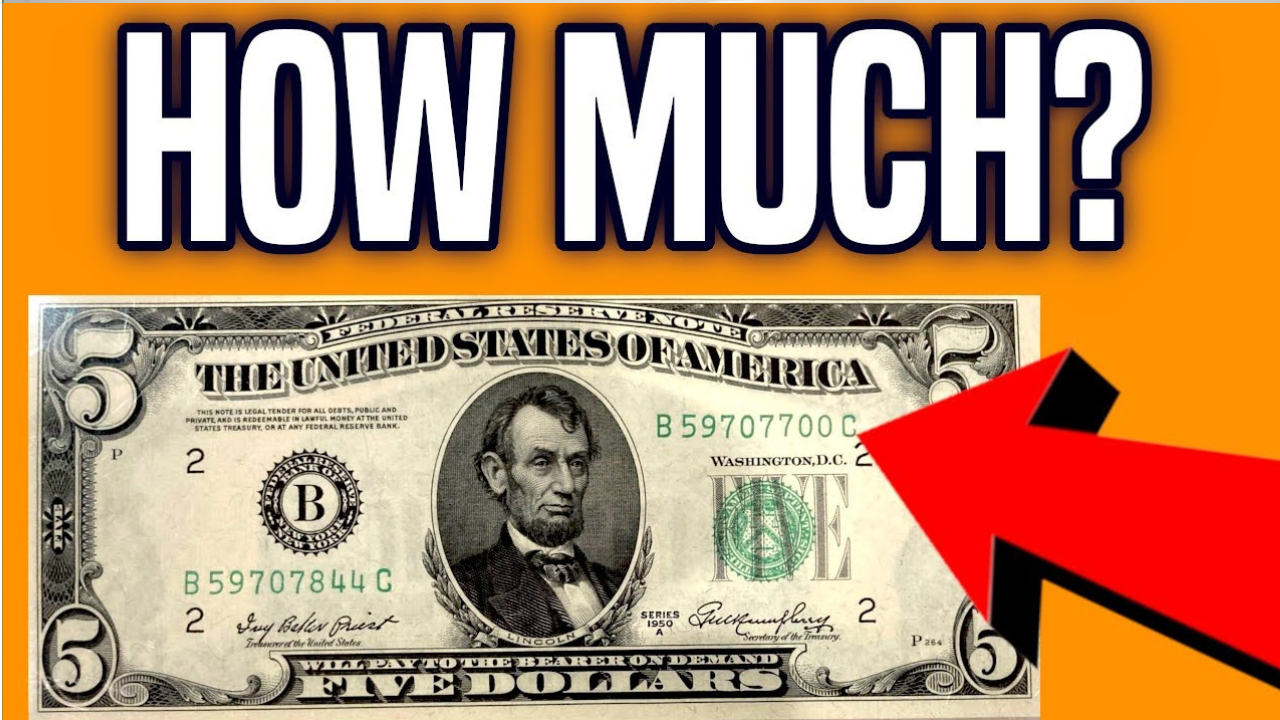Check the money in your pocket: As you know, we all do this without thinking—reach our hand into our wallet, hand over a five dollar bill, and then don’t look again. But what if that note at the gas station makes you thousands of dollars richer?
In the world of rare currency collecting, mistakes are real gold. One such priceless find is an upside-down five dollar bill from 1995—a small printing mistake that has turned this ordinary note into a collector’s treasure worth hundreds, sometimes thousands of dollars.
So how can you know if that old five dollar bill in your wallet or piggy bank is one of these rare gems? Let’s find out how to identify it, why it’s so valuable, and what you can do if you find it.
1995 $5 Bill: A Closer Look
Most people remember the 1995 $5 bill with a portrait of President Abraham Lincoln on the front and the Lincoln Memorial on the back. Printed in the mid-1990s, these notes are now nearly out of circulation, but that doesn’t mean they’re gone. Many notes are languishing in drawers, circulating at yard sales, or being given away in change for odd jobs.
What makes this 1995 series special is that some of these notes had a very rare and noticeable printing mistake: the Treasury Department seal, which was supposed to be upright, was mistakenly printed upside down.
How to spot the error
If you have a 1995 $5 bill, here’s how to check for an upside-down seal:
- Look for the green seal to the right of Lincoln’s portrait.
- On a normal note, the seal will appear upright, with the scales and keys clearly facing the correct way.
On a fake note, the seal will appear rotated 180 degrees. The scales and keys will appear upside down, and the circular text will be upside down.
This is something you might not notice unless you look closely—so maybe it’s time to take a second look at your old notes!
How much is it worth?
The value of a 1995 $5 note with an inverted seal depends on several factors:
- Condition: A clean, uncirculated note will sell for more than a wrinkled or torn one.
- Serial numbers: Collectors often value certain serial number patterns—small numerals, repeated numerals, or “star notes.”
- Demand: As with any collectible, market interest matters. As awareness grows, so does value.
In recent auctions, 1995 notes with a verified inverted seal error have sold for anywhere from $500 to more than $5,000, depending on rarity and condition. Some estimates even suggest that new specimens could be worth $10,000 or more in the right market.
Why is it valuable?
Errors like these are rare in currency because the U.S. Bureau of Engraving and Printing has extremely strict quality control standards. The fact that an upside-down stamp passed so many checks and made it into circulation is unusual—which excites collectors.
It’s an aspect of printing history that reflects both human error and artistic curiosity. Unlike coins, which are often mass-produced with minor imperfections, errors in paper currency are much less common—making them even more appealing.
What to do if you Find a Note
If you think you’ve found a 1995 $5 note with an upside-down seal:
- Don’t spend it! Treasure it like a valuable collectible.
- Get it authenticated by a professional currency grading service like PMG (Paper Money Guarantee) or PCGS Currency.
- Store it safely—keep it in a protective case or holder.
- Consult a currency dealer or check online marketplaces like eBay or Heritage Auctions to find out its value.
If it’s in good condition, consider keeping it—these notes can appreciate in value over time.
Final Thoughts: Is There a Treasure in Your Wallet?
In today’s digital age, it’s easy to overlook paper bills—but sometimes, even that overlooked $5 bill can hold hidden value. That $5 note from 1995 with the stamp upside down is a reminder that money isn’t just a tool—it’s also a part of history.
So before you spend that old note, take a closer look at it. You might have a small fortune in your hands—proof that even in a world of apps and credit cards, solid, hard cash can surprise you.

